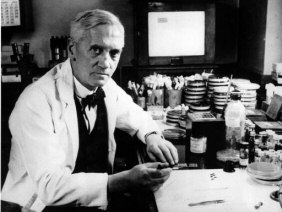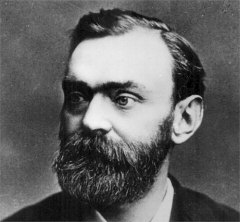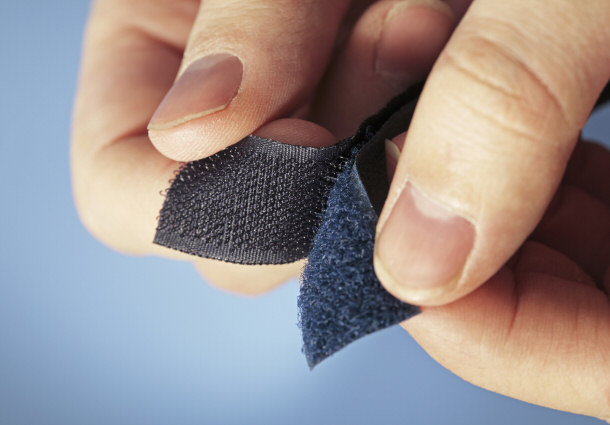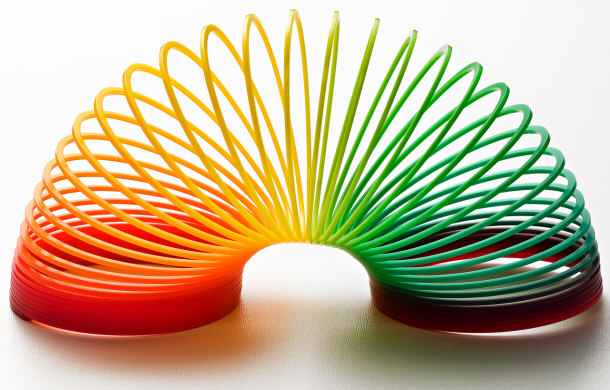15 Accidental Inventions That Were the Result of a Mistake
 Many of us do not realize that a great number of things we use on a daily
basis were discovered completely unintentionally. Medicines, equipment,
materials, and foods that we rely on, sometimes in dire emergencies, were not
always created with purpose. Often times, very important things have been
invented in an attempt to create something else entirely. No matter how they
came into existence, there are several inventions that our lives would not be
the same (or as good) without. Find out what things we use constantly in the
modern world that would not exist without all the right accidents occurring. Many of us do not realize that a great number of things we use on a daily
basis were discovered completely unintentionally. Medicines, equipment,
materials, and foods that we rely on, sometimes in dire emergencies, were not
always created with purpose. Often times, very important things have been
invented in an attempt to create something else entirely. No matter how they
came into existence, there are several inventions that our lives would not be
the same (or as good) without. Find out what things we use constantly in the
modern world that would not exist without all the right accidents occurring.
15) Penicillin
|
Alexander Fleming, Inventor of Penicillin:

|
Very rarely does poor housekeeping result in medical
breakthroughs. Alexander Fleming was a highly ranked medic throughout World War
I. His experiences with war and injury made him very familiar with antiseptics
and their shortcomings. He knew there had to be a way to fight bacteria without
all the harmful potential that antiseptics possess.
Fleming, according to "The Birth of Penicillin" by R. Hare, was studying a
bacterium called staphylococci when he went on vacation with his family. Not a
meticulously clean man, he simply stacked his petri dishes on top of each other
and left. When he returned, he found that a fungus had begun to grow on the
samples. The bacteria close to the fungus had been completely destroyed, while
the dishes father away were unaffected. It was clear that the fungus had killed
the bacteria.
After months of dabbling, Fleming named the substance Penicillin and released
it. Other scientists stabilized the liquid and made it into the antibiotic that
we recognize today. This was hands-down one of the most important medical
breakthroughs in history, and Fleming received a Nobel Prize for it in 1945,
according to the Nobel Foundation.
14) Dynamite
|
Alfred Nobel, Inventor of Dynamite:

|
The Nobel Prize was named for a man named Alfred Nobel. This is
the same man who invented dynamite, a substance that has caused a lot of death
in the world. His intentions were not violent, however, as he only wanted to
produce an explosive stable enough to be safely controlled. Mines and factories
had great need for this kind of explosive. In the 1860s, Nobel began
experimenting with nitroglycerin to see if he could stabilize it more than what
then-modern scientists had been able to achieve.
Nobel tried endlessly without success to make nitroglycerin a more
controllable substance. After many unfortunate explosions and the loss of family
members, most notably his brother, Nobel still refused to give up. One day, he
accidentally dropped a vial of the explosive on a floor covered in sawdust. He
was certain as it fell that he was going to die, but then the sawdust absorbed
the nitroglycerin, and nothing happened. Nobel found he was still able to safely
ignite the sawdust later, at his own leisure, but that the spark was not as
significant as the substance's original combustive properties. His next step was
to find a material that would preserve the dynamite but allow for powerful
ignition at any time.
After trying many other mediums to stabilize the nitroglycerin, Nobel found
that the mud in front of his own house worked the best. His region, Krummel,
possesses a very different kind of mud than the rest of the world. Once he
discovered that mud was the answer, he was able to patent one of the most
profitable inventions in history, according to Schück and Sohlman. Some
speculate that he began the Nobel Peace Prize organization in regret of the
invention he created, which ended up causing much more death and destruction
than Nobel had intended, according to the Nobel Foundation.
13) Vulcanized Rubber
An article from Science claims that cured rubber is a
concept dating back to the prehistoric era. Rubber is a natural substance that
can be tapped out of rubber trees, while synthetic rubber is the stable, clean,
adapted version of natural rubber. The material on our tires and covering the
bottoms of our shoes is vulcanized rubber. This is what Charles Goodyear
accidentally invented in 1839, while he was conducting experiments on natural
rubber.

The benefits and potential of rubber were well known in the early 19th
century, but scientists could not figure out how to keep the rubber from
becoming brittle and unstable when exposed to extreme heat and cold. Charles
Goodyear has been ardently trying for years to find a substance that could
stabilize rubber to make it more dependable and useful. However, one day,
Goodyear accidentally spilled some rubber on a heated stove he was working next
to, along with lead and sulfur. When cleaning, he realized that the mixture was
solid but remained usable.
This was the beginning of vulcanized rubber. According to "1493: Uncovering
the New World that Columbus" created, Thomas Hancock patented it in 1844, but
credit for the discovery of it is generally attributed to Goodyear. Vulcanized
rubber completely revolutionized the manufacturing world and remains incredibly
useful today.
12) Viagra
 This one surprises many people, because Viagra's result is such a
strange reaction to discover accidentally. However, this is just what happened
to English scientists in the early 1990s. Chemists were studying a compound
called Sildenafil for its potential treatment of angina pectoris and
hypertension. In other words, Viagra was originally intended to help improve
heart health. This one surprises many people, because Viagra's result is such a
strange reaction to discover accidentally. However, this is just what happened
to English scientists in the early 1990s. Chemists were studying a compound
called Sildenafil for its potential treatment of angina pectoris and
hypertension. In other words, Viagra was originally intended to help improve
heart health.
The study revealed that though nothing really improved with the test
subjects' hearts, there was a great deal of action going on in the males'
genital regions. The chemists realized what they had stumbled upon, quickly
changed their game plan, and began to market Sildenafil as Viagra for the
treatment of erectile dysfunction. There is a great deal of middle-aged men out
there who are extremely grateful to this happy accident.
11) Microwave Oven
 The microwave revolutionized modern cuisine. It enabled
people to prepare food in far less time than they could with a traditional oven.
Critics argue that microwaves lose a lot of a food's texture, flavor, and
nutrients, but the fact remains that cooking an entire chicken in just a few
moments is simply a marvel. Many
college students rely solely on a microwave to
make it through the few years, so imagine if this accidental invention had never
taken place. In a world where men and women go to work, clean, and raise kids,
putting together a meal entirely in the oven can be very challenging. Many homes
use their microwave ovens every single day, thanks to Percy Spencer's incidental
discovery. The microwave revolutionized modern cuisine. It enabled
people to prepare food in far less time than they could with a traditional oven.
Critics argue that microwaves lose a lot of a food's texture, flavor, and
nutrients, but the fact remains that cooking an entire chicken in just a few
moments is simply a marvel. Many
college students rely solely on a microwave to
make it through the few years, so imagine if this accidental invention had never
taken place. In a world where men and women go to work, clean, and raise kids,
putting together a meal entirely in the oven can be very challenging. Many homes
use their microwave ovens every single day, thanks to Percy Spencer's incidental
discovery.
Percy Spencer, an engineer who taught himself, worked for a company named
Raytheon, which had recently procured magnetron technology after its use in
World War II. When Spencer was working in an active area, he noticed in his
pocket a melted candy bar. This prompted him to try popcorn, eggs, and other
food on magnetic places and activating them. Soon after came the box, and
according to the patent (2495429), in 1945, Raytheon had the patent to the
technology behind the microwave oven. The first publicly available microwave
arrived two years later standing at almost 6 feet tall, according to Raytheon.
The microwave first became publicly popular in 1967, when the countertop
Radarange was released. In today's dollars, it would have cost almost $3,500,
according to Ohio Historical Society. Things picked up very quickly after that,
and many homes today would not be the same without their microwaves.
10) Pacemaker
The Pacemaker is another groundbreaking medical discovery that
has saved the lives of many people. A man named Wilson Greatbatch took the work
of other scientists before him and greatly improved upon it. The motivation for
his work was one big mistake.

By Steven Fruitsmaak [GFDL or CC-BY-3.0],
via Wikimedia Commons
Greatbatch had been working with other scientists, trying to record the
sounds of a human heart in the 1950s. He needed a resistor to complete the
circuit of the device he was constructing, and when he dipped his hand into his
toolbox, he pulled out and incorrectly sized resistor, according to CPA Global.
The measurements were not far off, but they did create a pulse in the circuit
that exactly matched the rate of a human heart at rest.
Immediately realizing his good fortune, he set up shop in an old barn and
proceeded to discover a way to make the device portable and small enough to
implant. He achieved this in 1957 and received a patent, according to "Permanent
Transvenous Pacing in 1962" by V. Parsonnet. Many of us know someone alive today
with the help of a pacemaker, and Greatbatch's discovery helped lead us to the
pacemaking technology that exists today.
9) Plastic
While natural, plastic-like materials have been used throughout
the world for thousands of years, the modern, ubiquitous polyethylene that we
all use today turned up incidentally about 75 years ago. According to ICIS, ICI
scientists Reginald Gibson and Eric Fawcett were attempting to create a
substance that could withstand great pressure. Unfortunately, their experiments
resulted in nothing but a group of explosions and outspoken safety concerns from
the scientific community.

Progress came to halt when Azko Nobel stopped further work on the project.
Fawcett knew his polymer of ethylene had potential, and he was very disappointed
to be unable to continue. Carol Kennedy describes his efforts to turn the
scientific community in his favor as the "Fawcett Disclosure." Later on that
same year, three men named Williams, Perrin, and Paton continued Gibson's work
with ethylene. While they were submitting the material to pressure, the
container leaked, and oxygen seeped in. Somehow, just the right amount of oxygen
necessary to improve stability made its way into the vessel and forever changed
the view on Polyethylene. From there, the development of plastic took off,
aiding manufacturing efforts, war efforts, and finally working its way into our
homes.
8) Potato Chips
The invention of potato chips has become something of a
legend. Once upon a time, specifically August 24, 1853 in Saratoga Springs, New
York, a very difficult customer sat down at the hotel restaurant. According to Madehow, a man who was possibly named Cornelius Vanderbilt ordered sliced
potatoes and repeatedly returned them to the chef. The patron was angry at the
thickness and sogginess of his potatoes and complained ardently. Each time he
received his re-cooked meal, he would send it back with the exact same
critiques.

George Crum, the chef behind the potatoes, became very annoyed with the
constant complaints. He had probably never come across a customer so picky and
so bold as to send a dish back repeatedly. To shut the customer up, he sliced
the potatoes paper-thin and fried them. It is easy to imagine the smirk on his
face as he brought this crunchy dish to the difficult patron of his restaurant.
To everyone's surprise, the customer fell in love with the thin, crispy result.
According to Civil War Interactive, this gave birth to the Saratoga Chip, later
named the potato chip. It caught on immediately, and almost every North American
today has had potato chips at least once. Potato chips are a national favorite
that would never even have existed if not for one picky customer. Maybe sending
food back is not such a bad idea after all.
This is a good example of an invention that
started as a joke but ended up successfully.
7) Velcro
Endlessly useful though not always fashionable, Velcro is another
important accidental invention. George de Mestral was an engineer who enjoyed
walking his dog, according to Swissinfo. Upon returning from a nice walk in the
Alps, he became bothered by the burrs sticking to his dog's fur. He examined
them closely and saw that each spike on the burr had a hook at the end, so it
could better attach to fibers. Velcro.uk explains that this inspired Mestral to
attempt to recreate the natural phenomenon himself.
Velcro up close:

Mestral had to overcome some obstacles to achieving Velcro. At first, no one
in the textile industry in Lyons would take him seriously. He could only find
one weaver willing to help him make a cotton prototype. In Steven Strauss' "The
Big Idea," we learn that Mestral realized that synthetic nylon fibers would
prove much more useful than wearable, tear-able cotton. He then had difficulties
designing loops that could be hooked and unhooked without issue. In desperation
he cut off the tops of his loops, creating ideal hooks for Velcro-ing. The
Syracuse Herald-Journal recalls the breakthrough of the new product on Aug. 25,
1958, excitedly describing the miraculous "zipperless zipper." The rest is
history.
6) Matches
 Matches are the essence of simplicity, and primitive
sulfur-dipped forms of them have existed for at least one thousand years. These
were far-removed from the safe matches that we use today. John Walker invented
the friction matches so prevalent in today's society while trying to create a
flammable solid that could transfer heat to wood in 1827. He may have gotten
exactly what he wished for, but, according to the "Dictionary of National
Biology," he came upon his invention quite by accident. Matches are the essence of simplicity, and primitive
sulfur-dipped forms of them have existed for at least one thousand years. These
were far-removed from the safe matches that we use today. John Walker invented
the friction matches so prevalent in today's society while trying to create a
flammable solid that could transfer heat to wood in 1827. He may have gotten
exactly what he wished for, but, according to the "Dictionary of National
Biology," he came upon his invention quite by accident.
Walker was stirring a large pot of flammable substance that he intended to
experiment with later. He stirred it with a wooden stick, and when he dropped
the stick on his hearth, he found that the stick ignited. He realized the
potential of friction to spark the necessary heat catalyst to create fire. It
did not take him long to develop a matchbox with the friction strip attached
that we recognize today, according to BBC.
Unfortunately, walker did not take up the opportunity to patent his
discovery, and BBC reports that in 1829, Samuel Jones came out with an exact
copy of Walker's product. Previously, Walker had been selling the matchboxes at
one shilling per package, and since he was already well to do, he saw no need to
monetarily possess his invention. Walker thus received no recognition for his
creation until after his death 30 years later.
5) Post-it Notes
 An invention that college students, teachers, researchers,
moms, and more all rely on daily was not purposely created. The inventor of
Post-it notes, Dr. Spencer Silver, worked tirelessly to try and create an
extremely strong adhesive. What he ended up creating was a somewhat sticky glue
that is reusable and responsive to pressure. Silver found himself with an
invention that had no purpose, according to About Post-it Brand. One of Silver's
colleagues, Art Fry, suggested using the glue for a bookmark in his hymnals.
This gave birth to the concept behind Post-its. An invention that college students, teachers, researchers,
moms, and more all rely on daily was not purposely created. The inventor of
Post-it notes, Dr. Spencer Silver, worked tirelessly to try and create an
extremely strong adhesive. What he ended up creating was a somewhat sticky glue
that is reusable and responsive to pressure. Silver found himself with an
invention that had no purpose, according to About Post-it Brand. One of Silver's
colleagues, Art Fry, suggested using the glue for a bookmark in his hymnals.
This gave birth to the concept behind Post-its.
Post-it notes have adhesive only on one portion of the paper, and are similar
to what the USPS uses to label mail, except they prefer a full adhesive. The
partial adhesiveness of Post-it notes is what makes them so useful for
reminders, notes, and thoughts. Users can stick them one place, then pull them
off without damaging anything and stick them somewhere else several more times.
This was undoubtedly a very useful accident. Even the signature yellow color
of Post-it notes was accidentally chosen. According to an article titled "Why
are Post-it Notes Yellow?" the yellow paper came from a lab next door to the
Post-it studio. Yellow paper was all the lab had on hand, so that is what
Post-its had to be. Very rarely do successful products just happen the way the
Post-it notes did.
4) Coca-Cola
While the formula for Coca-Cola was no accident, Dr. John Smith
Pemberton had no way of knowing his beverage would become a soft drink empire.
His formula was for a new and improved version of Pemberton's French Wine Coca,
which was a nerve tonic he had been popularly distributing for quite some time,
according to the Columbus Ledger-Inquirer. When Atlanta, Georgia decided to
enact prohibition, Nation's Restaurant News states that Pemberton removed the
alcohol from his nerve tonic, and let it flow in pharmacy soda fountains at five
cents per glass.
Back then, carbonated water was viewed as good for overall health, according
to "Themes for Coca-Cola Advertising (1886-1999)." People immediately began
reacting to the removal of alcohol and addition of some sugar to the old
formula. Here was something sweet and unique-tasting that they could enjoy
without getting drunk or woozy, and they believed it was generally making them
healthier. The sweet, refreshing formula has been only slightly altered since
then (except during the tragedy that was New Coke), and Coca-Cola still
dominates the soda world. Medicine today has found that Coca-Cola and all sodas
with sugar or artificial sweeteners is absolutely not beneficial to bodily
health. We can still enjoy the results of Pemberton's accidental international
beverage sensation, but everyone needs to consume this stuff in moderation.
There is also
many uses for Coca-Cola other than to drink it.
3) Slinky
Well, we have all heard what they say about Slinky's. Everybody
knows them and the way they fall down the stairs. One of the world's most
beloved toys came about from a man with slightly more technical intentions. CS
Monitor describes Richard James as an engineer who wished to develop springs
that could stabilize materials on U.S. Navy ships. He was motivated by World War
II and wished to help his fellow Americans. Well, he may not have ended up
helping the war cause, but he certainly lifted the spirits of all the kids
waiting at home for their fathers to hopefully return from duty. The joys of
Slinkys have carried through the decades and will likely remain popular for many
decades more.

James knocked a spring off of his table accidentally, and he observed as it
slinked down to the floor. He had a sudden epiphany. He told his wife, Betty,
that the spring would make an excellent children's toy. He vigorously pursued
perfecting the spring as a toy after the Navy showed no interest in his
invention. His wife thought up the name "Slinky," and in 1945 at the toy's
debut, they sold 400 Slinky's in an hour and a half, according to Mark Rich's
Warman's 101 Greatest Baby Boomer Toys. Most kids today have owned at least one
slinky, and they still never cease to amaze new youngsters. This invention was a
truly happy accident.
2) X-rays
X-rays are yet another invaluable medical resource to humans all
over the world. We even X-ray our pets these days. X-radiation is radiation that
falls on the electromagnetic scale just after ultra violet light. According to
NASA, some nationalities refer to it as Röntgen Radiation, because Wilhelm
Röntgen discovered X-rays in 1895. He called them X-rays to signify their
unknown nature.

Röntgen experimented with Lenard and Crooks tubes until he realized that they
could be emitting a new kind of ray. He began developing his research until he
created a basic device to test his X-ray theory. He passed the device over his
desk and found that the light penetrated through books and other objects. Weeks
later, he took the first X-ray of his wife's hand. She was more than shocked by
the ordeal, according to Gottfried Lanwehr's article in Singapore: World
Scientific.
Now, X-rays are part of the every day medical world. Dentists use them to
ensure proper tooth growth and maintenance is occurring. Doctors need them for
patients with broken bones, bone tumors, and other ailments that cannot be seen
through the layers of muscle and skin on a person's body. X-rays give us insight
into the human body more quickly than any other technology (MRIs take about an
hour to complete), and we have Röntgen's accidental discovery experimenting with
fluorescent tubes to thank for it.
1) Anesthesia
Anesthesia is an invention most of us cannot imagine living
without. We all have heard the gruesome war stories of the past, where men would
have to be strapped down and scream while doctors sawed off their infected
limbs. Even smaller procedures such as tonsillectomies would be excruciating
without the effects of anesthesia.

Back in the 1840s, there were not gaggles of young adults enjoying marijuana,
LSD, and other party drugs. Instead, people threw parties at which they ingested
large amounts of ether for entertainment. These get-togethers were popularly
known as "ether frolics," and a doctor named Crawford Long observed that his
friends would sustain injuries with no pain during these parties, according to
his own entry in the "Southern Medical and Surgical Journal."
When he suggested that his friend use ether to undergo a surgery, he realized
what a valuable discovery he had made in 1842. He did not reveal his findings
until seven years later. A dentist name William Morton performed the first
public showing of the effects of inhaling ether. From there, anesthetics have
evolved tremendously into the complex but relatively safe procedure that we have
come to expect today.
Final Words
So much of what we rely on today is the result of incredibly hard work on the
part of scientists, designers, and chefs across the world. Sometimes, the
results of this work was not at all what the inventors had intended, but they
quickly realized what they had done and changed their focus to market their new
product. Sometimes the intended result was achieved through accidental means.
Considering all of these accidental inventions, it is easy to consider how many
potential breakthroughs have yet to be stumbled upon. Someone, somewhere is
about to fumble his or her way into a new product that could permanently shape
the future of our culture or the entire world.
History
Top Lists:
15 Biggest Architectural Blunders
Top 15 Most Horrifying Terrorist Attacks
15 Fascinating Facts About the Vietnam War
Top 15 Amazing Ancient Egyptian Architecture
20 Little Known Facts About the Titanic
Top 10 Most Creepiest Abandoned Places in the World
26 Interesting Facts About Henry Ford
List of 15 Tough Ancient Warriors Through History
List of 15 Notorious Roman Emperors and Empresses
Top 15 Worst Pandemics in History
15 Things That Remained the Same in the Past 100 Years
Top 15 Things China Invented First
Top 15 Greatest Inventors in History
15 Interesting Facts About Abraham Lincoln
10 Inventors Who Stole Their Ideas
15 Stories of Hilarious Medieval Victories
15 Detectives Credited With Solving The Biggest Cases In History
15 Fascinating Facts About the Ancient Pyramids
15 Inventions That Were the Result of a Mistake
15 Famous Stories of Execution
16 Rare Facts About the U.S. Presidency
15 Astonishing Leadership Stories that Ended up Successfully
Informational:
Analysis of the Linear B tablets and Wall Paintings
Aristophanes and Classical Greek Comedy
The First War of Scottish Independence
|